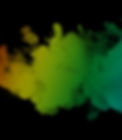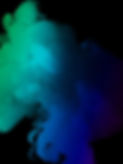
The Technology
Welcome to Spread Less
We use a Convolutional Neural Network to analyze a visualization of your cough.
What is a Convolutional Neural Network?
A Convolutional Neural Network (CNN) is a Deep Learning algorithm which can take in an input image, assign importance (learnable weights and biases) to various aspects/objects in the image and be able to differentiate one from the other.(Sumit Saha, 2018)
Audio Input
Fast Fourier Transform Visualization
Visual Input
Convolution
Pooling
Convolution
Flatten
Fully Connected
Now, Let's Talk Setup
How we used CNN
Your audio input is converted into a visualization of a Fast Fourier transform (FFT) that a Convolutional Neural Network (CNN) can then use to identify key components of the cough. Once the CNN makes a prediction on a strength (classified between 0 and 9), a multivariable linear regression algorithm predicts the image of the cough.
This prediction is based on over a hundred cough images processed into a pixel array with thousands of individual comparisons. In total, the predicted image is created by a machine learning model that has gone through over a million total comparisons.
.png)
Once the prediction is complete, each individual pixel's HSB color value is used to identify key components of the cough. Values below a certain threshold are cut out to distinguish the cough from the rest of the image, and border pixels were used to calculate the cough's breadth and length. The higher the pixel value, the more dense and larger the particles in that pixel are, which is used to calculate the regions within a cough that are more likely to transmit the virus and/or bacteria.

Honey, where's my Glycerin?!
A setup was created where subject would cough into a concentrated fog box that would then eject a cough in the form of fog.

The fog was created using a 3:1 water to glycerin mixture, and the laser light sheet was obtained by using a 532nm green laser and a borosilicate glass rod.
The cough was recorded by taking a long exposure image of the cough from above. The entire cough could be seen by using a tripod to put the camera at a high enough point above the vapor. The distance the cough traveled was measured in feet using markers on the ground. The microphone recording the cough was a constant 1.5 feet away from the subject as to give accurate cough data.
Each cough sound FFT was matched with a certain size cough (in terms of density and distance traveled). Over 100 coughs were done and inputed into the database. The algorithmic part of the project that led to the prediction is explained in detail and can be accessed in the home page.

.png)
Here's the risk of someone getting COVID-19 within 5 minutes of exposure vs distance.
This is the Relative Pixel Density vs Cough Strength
.png)
.png)
This is the chance of someone getting COVID-19 at 3 ft vs cough strength
Same thing, but at 6 ft vs cough strength
.png)
.png)
And finally, at 9 ft.
Technology
Convolutional Neural Networks are a class of deep learning neural networks that analyzes images.
Accuracy
Findings were correlated with data from the Lancet Medical Journal, and we found remarkable similarities.
Story
We are two 17 year old high school students who set out to democratize cognitive science for non-research applications.
Resources
Check out the numerous educational graphs, guides, videos, and other resources we've made to help you understand our technology.
Significance
This site helps individuals understand their personal risk of transmitting COVID-19, and data collected can be repurposed for science research and policy-making.
Learn More >
The Fluid Simulator utilized much of the code from Pavel Dobryakov's fluid simulation, but was optimized to match with the approximate size, shape, and strength of a specified cough provided by the user. Credit goes to him for creating the simulation.
Copyright (c) 2020 by Pavel Dobryakov ( https://codepen.io/PavelDoGreat/pen/zdWzEL )
Permission is hereby granted, free of charge, to any person obtaining a copy of this software and associated documentation files (the "Software"), to deal in the Software without restriction, including without limitation the rights to use, copy, modify, merge, publish, distribute, sublicense, and/or sell copies of the Software, and to permit persons to whom the Software is furnished to do so, subject to the following conditions: